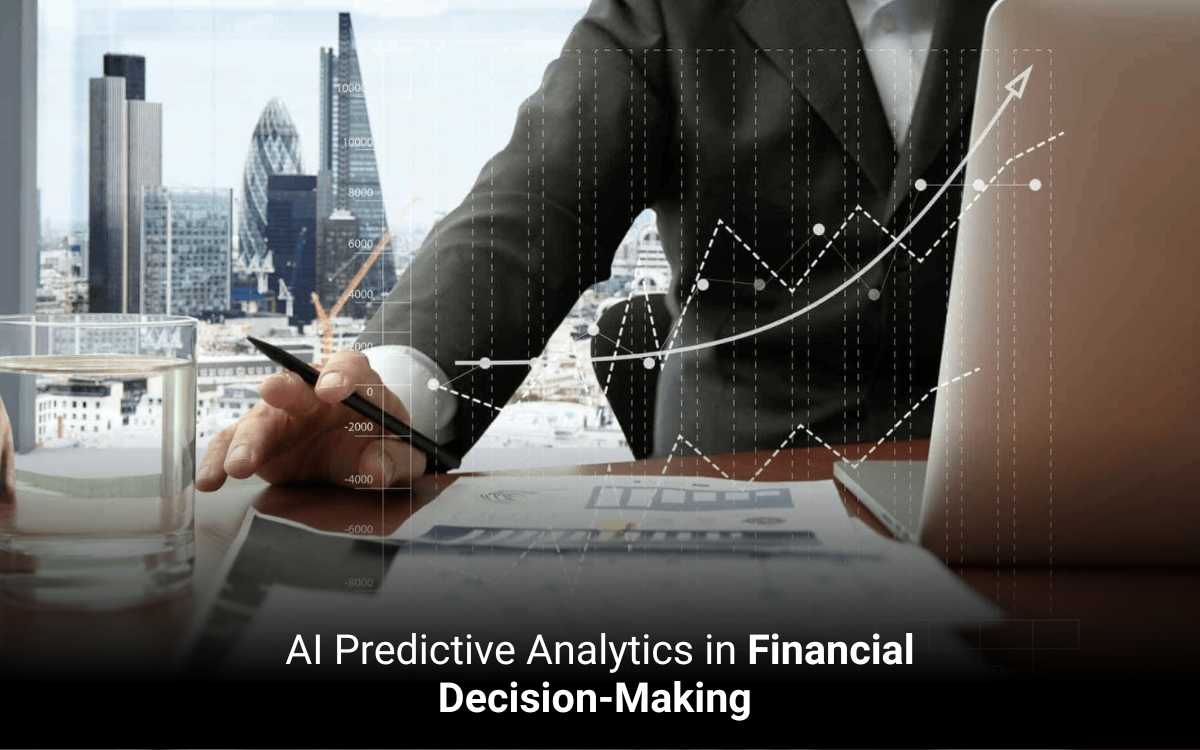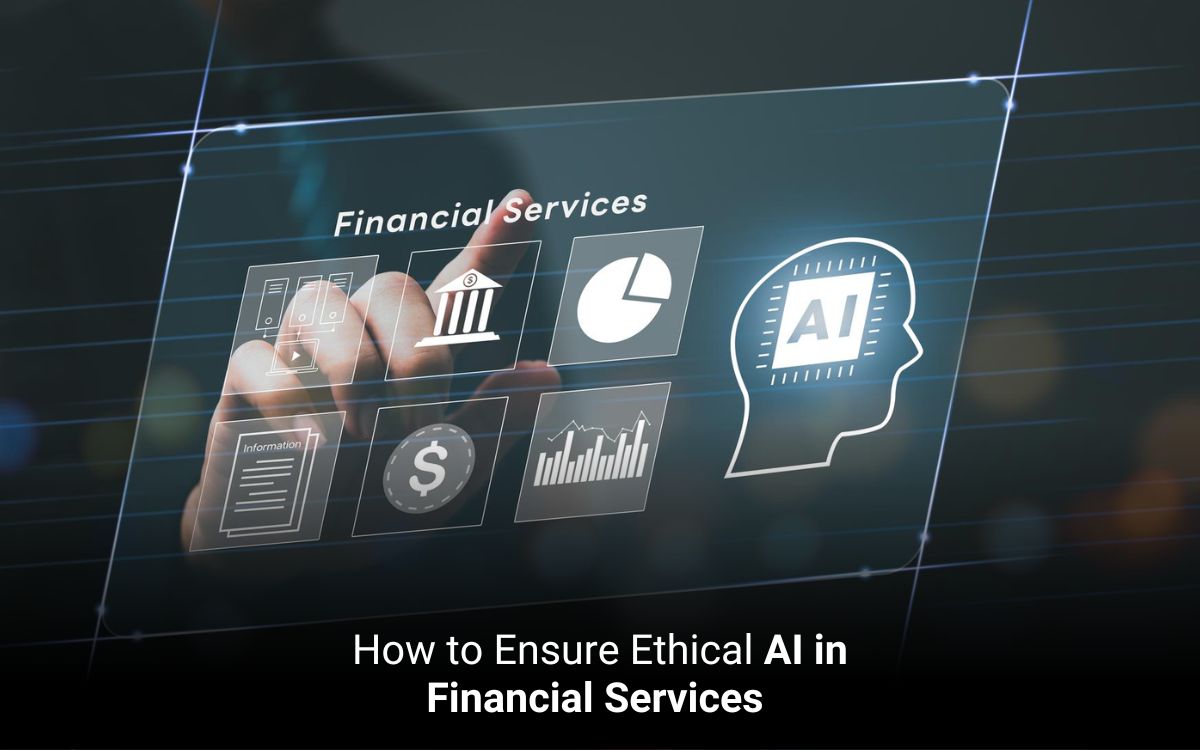AI Predictive Analytics in Financial Decision-Making

A global company plans its annual budget amid volatile market conditions. Traditional forecasting methods struggle to keep pace, but AI Predictive Analytics forecasts revenue streams, anticipates risks, and allocates capital with precision. With the help of AI, organizations are shaping their strategies for foresight.
For example, AI models can anticipate cash flow fluctuations, forecast payment patterns, or even detect early signals of credit risk. Financial institutions use algorithms to predict loan defaults, optimize investment portfolios, and assess market volatility in real-time. ML models learn from new financial inputs, such as transaction histories or sentiment analysis, and refining their predictions.
This article will discuss how AI can help with financial decision-making.
AI Technologies in Predictive Analytics
The following are AI technologies that help in financial decision-making.
1. Machine Learning (ML) for Pattern Recognition
ML is part of AI Predictive Analytics, helping to identify complex patterns in financial data with minimal programming.
Impact: ML algorithms forecast revenue trends, detect anomalies, and predict credit risks based on historical data.
Example: A software firm uses ML to analyze subscription renewals and predict which clients are likely to churn. It helps adjust revenue projections.
2. Natural Language Processing (NLP) for Sentiment and Market Analysis
NLP interprets and analyzes unstructured text such as financial reports, market news, or analyst reports to uncover insights.
Impact: By understanding sentiment around market trends, you can align capital strategies with emerging opportunities or risks.
Example: A financial consulting firm leverages NLP tools to scan market trends, integrating sentiment analysis into its AI Predictive Analytics.
3. Neural Networks for Forecasting
Deep learning models, powered by neural networks, can analyze datasets for forecasting accuracy.
Impact: These models identify non-linear correlations, such as how pricing, demand surges, and geopolitical changes affect financial outcomes.
Example: A manufacturing company employs neural networks to forecast raw material costs and optimize procurement budgets.
4. Predictive Modeling and Simulation
Predictive engines use AI models to simulate potential financial outcomes under various business scenarios.
Impact: Finance leaders can test strategic moves such as acquisitions or market expansions before execution.
Example: A technology provider applies predictive simulation to anticipate currency fluctuations and optimize its hedging strategy across regions.
5. Automated Data Integration and Cloud AI Platforms
Cloud-based AI platforms integrate data from ERP systems, CRM, and external financial sources, generating insights.
Impact: Centralized data environments eliminate silos, ensuring timely finance decisions.
Example: A services firm uses a cloud AI solution that integrates sales, operations, and finance data to forecast quarterly performance.
How AI Predictive Analytics Helps in Financial Decision-Making
Here’s how AI predictive analytics helps in decision-making.
1. Accurate Forecast and Financial Planning
AI Predictive Analytics incorporates real-time data, market trends, and behavioral patterns to create accurate financial forecasts.
Impact: It helps anticipate future cash flows and revenue fluctuations with precision.
Example: A SaaS company uses AI models to predict quarterly revenue based on customer usage patterns, renewal rates, and economic indicators. It allows finance teams to adjust budgets and allocate resources.
2. Improves Risk Assessment and Mitigation
AI models analyze variables to detect emerging risks from credit defaults to market volatility.
Impact: It helps make informed financial decisions that minimize exposure and enhance resilience.
Example: A lending firm applies AI Predictive Analytics to evaluate client creditworthiness by analyzing transaction behaviors and external data sources.
3. Optimizes Working Capital and Cash Flow Management
Predictive AI can model cash inflows and outflows in real-time, helping organizations maintain liquidity and avoid financial bottlenecks.
Impact: Leadership gains visibility when investing, borrowing, or holding cash to support operational agility.
Example: A manufacturing firm uses AI-driven predictive models to forecast supplier payments, enabling cash management, and reduced borrowing costs.
4. Supports Investments and M&A Decisions
AI models simulate multiple financial scenarios, helping leadership assess the potential outcomes of mergers, acquisitions, or capital investments.
Impact: C-suite executives can base strategic moves on data, improving ROI and long-term value.
Example: A private equity firm employs AI Predictive Analytics to analyze market signals and financial statements before acquiring companies.
Challenges in Adopting AI Predictive Analytics
Adopting AI predictive analytics in decision-making also has challenges.
1. Lack of Skilled Talent and AI Literacy
Challenge: Implementing predictive analytics requires expertise in data science, ML, and financial modeling, which are often scarce and difficult to find.
Solution: Build cross-functional teams combining data scientists, financial analysts, and AI strategists. Additionally, offer AI literacy programs to improve adoption.
Example: A services company partnered with an AI consulting firm to train its finance leaders in interpreting predictive models, resulting in faster decisions.
2. Model Bias and Transparency Concerns
Challenge: AI algorithms can reflect bias in training data, leading to skewed financial forecasts or inaccurate risk assessments.
Solution: Implement “explainable AI” frameworks that make model decisions transparent and auditable. Regular model validation and human oversight ensure accountability.
Example: A corporate lending institution introduced an AI audit process that reviews predictive credit scoring models quarterly to prevent bias and maintain compliance.
3. Regulatory and Compliance Constraints
Challenge: Financial data is subject to strict compliance rules, making it complex to adopt AI technologies that process sensitive information.
Solution: Adopt AI systems with built-in compliance features such as encryption, access control, and audit trails. Partnering with vendors who understand these regulations mitigates risk.
Example: A FinTech provider implemented compliant AI Predictive Analytics tools that align with GDPR and financial reporting standards.
4. Change Resistance and Cultural Barriers
Challenge: Many organizations struggle with internal resistance to AI adoption, often due to fear of automation replacing human expertise.
Solution: Foster a culture where AI is positioned as an enabler, enhancing human judgment rather than substituting it.
Example: A manufacturing enterprise introduced predictive dashboards alongside finance workshops to demonstrate how AI augments decision-making, improving adoption.
Conclusion
As technology continues to evolve, the integration of AI Predictive Analytics will become a defining factor in FinTech. Those who invest in these capabilities today are building the intelligent systems that will become the competitive advantage. The key lies in embracing AI as a strategic partner that amplifies the organization’s goals. Predictive analytics offers stability, which helps leaders to see around corners, anticipate challenges, and act.




